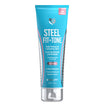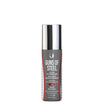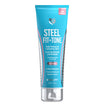The immune system is a complex network of biological structures and processes tasked with defending the body against microscopic ne’er-do-wells (bacteria and viruses) intent on inflicting harm, illness, and infection.
The immune system also helps eliminate toxic or allergenic substances from the body that gain entry through mucosal surfaces.
Essentially, the immune system helps to prevent or limit infection.
Today, we take a look at how the immune system protects against viruses as well as ways to fortify your immune system.
How Does the Immune System Protect Against Viruses?
Think of the immune system as a finely-tuned, fully-equipped military defense force. Its sole mission is to stop or prevent the onset of infection. It is an incredibly complex and sophisticated network of cells, proteins, and enzymes that jumps into action in a variety of ways depending on the type of pathogen as well as where the infection takes place.
Part of its sophistication also resides in its ability to decipher between healthy cells and infected cells.
The immune system does so by sensing proteins that are found on the surface of all cells. It learns early on to ignore its proteins and "attack" those that are foreign. Based on what type of signals it receives, the immune system decides which "class" of defenders (antibodies) to release, meaning that the immune system handles infection from bacteria different than infection from viruses.
Each cell type within the immune system has a unique role, with different ways of recognizing problems, communicating with other cells of the immune system, and executing their respective functions.
Now, when a virus infects a person, it invades the cells of the host to survive and replicate.
Once the virus is inside the cell, the cells of the immune system cannot ‘see’ (recognize) the virus, which means the immune system may not realize that the host cell is infected.
To overcome this, cells utilize a system that allows them to show other cells what is inside them using a set of molecules known as class I major histocompatibility complex proteins (MHC class I). <1,2>
The MHCs display sections of protein (called peptides) from inside the cell on the surface of the cell.
If the cell is infected with a virus, these “displayed” pieces of peptide will include fragments of proteins created by the virus.
T cells are a particular type of cell within the immune system that patrols the body looking for infections.
A particular type of T cell, called cytotoxic T cells, have specialized proteins on their surface that help them recognize which cells are infected with a virus.
FYI, cytotoxic T cells are named for the fact that they kill cells that are infected with viruses with toxic agents.
These proteins are called T cell receptors (TCRs).
Each cytotoxic T cell has a T-cell receptor that can recognize a specific antigenic peptide bound to an MHC molecule. (Note: An antigen is any substance that can activate an immune response.)
If the T cell receptor detects a peptide from a virus, it alerts its T cell of an infection.
Subsequently, the T cell releases certain cytotoxic factors to kill the infected cell and, therefore, prevent the survival of the invading virus.
At this point, it’s important to note that viruses (much like human beings) are very adaptable, and they can develop methods to avoid detection by T-cells.
For instance, some viruses are even able to prevent MHCs from getting to the cell surface to display viral peptides.
If this happens, the T cell is unaware that a cell is infected with a virus.
Fortunately, our immune system is equipped with an entire arsenal of different “weapons” to combat antigens.
Natural killer cells are another member of the immune system that specializes in killing cells that have a reduced number of MHC molecules on their surface.
When the natural killer cell finds a cell displaying less than the normal amount of MHC molecules, it then releases toxic substances, similar to how cytotoxic T cells work, which kill the virally-infected cell. <1>
Cytotoxic cells (like T-cells and natural killer cells) come equipped with preformed mediators, which are inside compartments called granules. Once these cytotoxic cells come into contact with an infected cell, the mediators are released.
One of the more intriguing mediators is called perforin, which can make pores in cell membranes.
Once these pores are created on the virally-infected cell, other proteins can enter the cell to bring about its demise and destruction through a process called apoptosis -- programmed cell death.
Another cytotoxic factor worth mentioning is granulysin, which directly attacks the outer membrane of the target cell, destroying it via lysis (disintegration of a cell by rupturing the cell wall or membrane).
Cytotoxic cells also release other proteins, called cytokines, after making contact with infected cells.
These cytokines include interferon-g and tumor necrosis factor-a (TNF-a). They transmit a signal from the T cell to the infected cell and other neighboring cells to dial up the attack.
Beyond the immune systems “army” of cytotoxic cells, it also uses other mechanisms to combat viruses in interferons and antibodies.
Antibodies
Antibodies are a class of proteins that help eliminate viruses before they have the opportunity to infect a cell. Think of them as one of the first lines of defense of the immune system.
Once a pathogen is recognized, antibodies cling to them, which causes one of three things to occur:
- Binding to a virus neutralizes it, meaning it cannot infect a host cell.
- When multiple antibodies team up, they can force virus particles to bind together (via agglutination), making them a bigger (easier) target to track down and eliminate than individual viral particles.
- Antibodies can also activate the complement system, which makes pathogens more susceptible to phagocytosis. The complement system can also damage the phospholipid bilayer that is present on certain types of viruses.
- Lastly, antibodies can activate phagocytes to eradicate viruses. Phagocytes enact a mechanism called phagocytosis, which entails the phagocyte engulfing ("eating") the virally-infected cell and destroying it.
Interferons
Interferons are a class of small proteins synthesized and released by virally-infected cells. These proteins help stop viral replication by directly impeding the viruses' ability to reproduce within an infected cell.
Interferons also function as signaling molecules that help infected cells alert neighboring cells of a viral presence. This signal helps nearby cells increase the concentration of MHC class I molecules on their surfaces so that cytotoxic T cells patrolling the area can identify and eradicate the viral infection.
Now that you've got a basic understanding of how the immune system tackles viral infections let's now discuss some ways you can strengthen your immune system.
How to Strengthen Your Immune System When Sick
In the grand scheme of things, the immune system does a phenomenal job of keeping us free from illness and infection the vast majority of the time.
But, every once in a while, something “slips” through and infects us.
When this happens, many of us start searching for ways to “boost” or “strengthen” the immune system in any number of ways.
However, it’s not that simple.
As we stated earlier, the immune system is a diverse, vast, and complex network that is finely tuned.
Thinking you can boost just one aspect of your immune system is a bit short-sighted.
However, there are things you can do to help make your immune system as strong as possible should you get sick.
And, as you probably guessed, it all begins with living a healthy lifestyle.
That means:
- Eat A Healthy Diet Rich In Fruits, Veggies, Whole Grains, Lean Protein, And Healthy Fat
- Don’t Smoke
- Limit Alcohol Intake (1 Drink Per Day For Women, 2 Drinks For Men)
- Maintain A Healthy Body Weight
- Get Enough Sleep Each Night (7-9 Hours)
- Minimize Stress And Improve Your Handling Of Stressful Situations
- Wash Your Hands Regularly And Thoroughly
- Don’t Be Around Sick People (If You Can Help It)
- Exercise Regularly
What About “Immune Boosting Supplements?”
These days you’re likely bombarded by all sorts of advertisements for various herbs, pills, and capsules promising to “boost” your immune system.
The truth is that most of these products won't do much of anything except make a dent in your bank account.
Yes, indeed, certain supplements (vitamin C, vitamin D, echinacea, etc.) have been shown to shorten the duration and severity of some illnesses. Still, there are also some studies showing that supplements don't have much of an effect at all.
It’s more likely that the studies showing supplements improve immunity are a result of correcting nutrient deficiencies, such as zinc, selenium, iron, copper, folic acid, and other essential vitamins.
The best source to get these nutrients is from whole foods. If you have trouble meeting your micronutrient goals each day, then taking a multivitamin or greens supplement may be appropriate.
Takeaway
Consuming a healthy diet rich in fruits, vegetables, whole grains, lean protein, and healthy fats is essential to a strong, healthy immune system.
No amount of pills, powders, or potions can make up for a poor diet.
At the same time, we realize that there will be days when you’re a bit “off the mark” with your nutrition plan, and there are those who like to go above and beyond the “bare minimums” with their fruit and veggie intake.
To complement and support a nutritious meal plan, SteelFit® offers a pair of micronutrient powerhouses in Steel Multi-V™ and Steel Greens™.
Steel Multi-V™ is a comprehensive multivitamin/multimineral powder supplying over 30 nutrients, including quality doses of all the essential vitamins and minerals.
Steel Greens™ contains a nutrient-dense, superfood greens and reds complex designed to support the body's antioxidant system, digestive function, and immune health.
References
- Laing, K., & Hutchinson, F. (n.d.). Immune Responses to Viruses. British Society of Immunology.
- Klimpel GR. Immune Defenses. In: Baron S, editor. Medical Microbiology. 4th edition. Galveston (TX): University of Texas Medical Branch at Galveston; 1996. Chapter 50.Available from: https://www.ncbi.nlm.nih.gov/books/NBK8423/




















